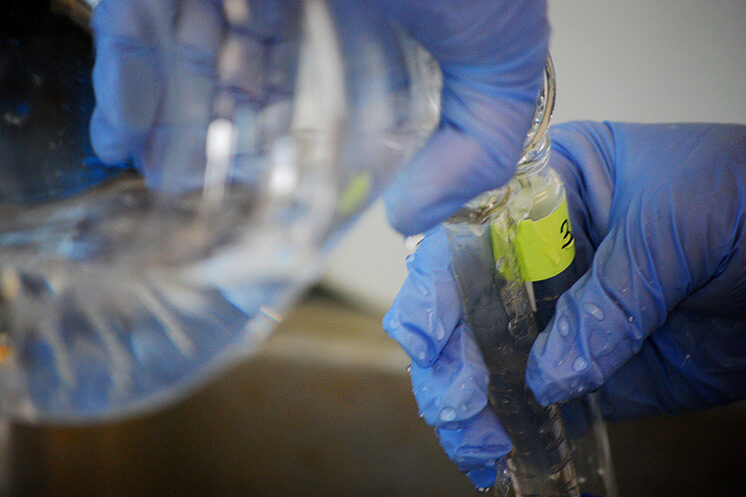Hurricane Irene and Water Quality Monitoring

When it became clear that Hurricane Irene would move through the Bay region, the Chesapeake Bay Program’s (CBP) monitoring program coordinators, like Bruce Michael at Maryland’s Department of Natural Resources, adjusted the Bay water quality monitoring cruise schedules to get data just following the hurricane.
In the days following the hurricane, recent data from Maryland’s Eyes on the Bay program showed that the Bay received a short term water quality boost from the hurricane. This is a result of the physical mixing of the Bay’s waters by extreme winds and waves that sent oxygen-rich surface waters into the deeper channels that are normally lacking oxygen at this time of year. Given the timing of this storm, the Bay likely dodged a potentially serious bullet thanks to Irene’s timing, rapid movement through the region, and track
However, we will still have to wait for weeks (mixing up of the water column with good oxygen levels; short term algal blooms), and really months (impact on the next spring’s algal blooms, early summer’s re-growth of underwater Bay grasses, and mid-summer’s dissolved oxygen conditions years), to fully answer the question, “What was the impact of Hurricane Irene (and even the fall 2011 hurricane season) on the Bay?”
Fortunately, the CBP partnership has an extensive monitoring program in place which continues to measure various indicators of the Bay’s health — in this case, prior to the hurricane and in the weeks and months following the storm.
For additional information on Hurricane Irene’s impact on the Chesapeake Bay, please refer to Rich’s complete article, “Impacts of Hurricane Irene on the Health of Chesapeake Bay? Only Time (and Monitoring) Will Tell!” featured on the Bay Blog.
In Your Classroom:
Your students may not be able to monitor the impacts of Hurricane Irene on the Chesapeake Bay, but they can conduct a smaller-scale research project by monitoring the water quality of a stream near your school! Engaging your students in water quality monitoring can help them learn about pollution, local ecosystems, and stream health. Have your science class or club monitor water temperature, air temperature, salinity, pH, dissolved oxygen, and Secchi Depth, and compare the results from different times of the year or before and after a storm to help them learn about factors that influence water quality. National Geographic’s FieldScope, a web-based mapping, analysis, and collaboration tool that support geographic investigations, can help your students understand the data they collect.
For additional information on how to start a water quality monitoring program at your school and how to use the data you generate in your classroom, please refer to:
- Bay Backpack’s Water Quality Teacher Resources
- Bay Backpack’s Water Testing Teacher Resources
- Project WET’s Water Quality Resources
- NEEF’s Water Quality Testing Resources
- National Geographic’s Chesapeake Bay FieldScope
- Estuaries 101’s Chemistry in an Estuary Activity
- Estuaries 101’s Dissolved Oxygen in an Estuary Activity
- NOAA’s Hot, Cold, Fresh, and Salty Lesson Plan
